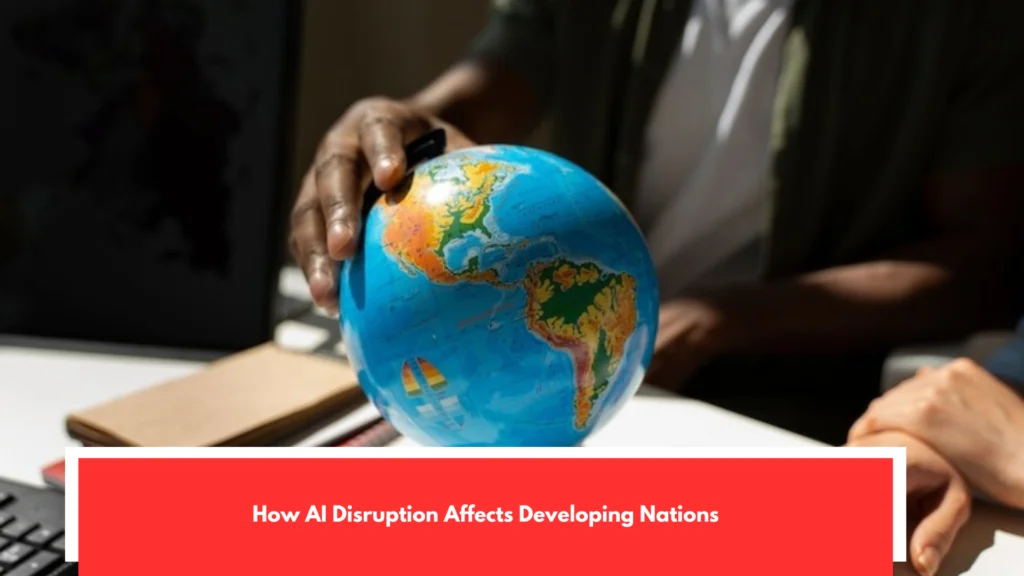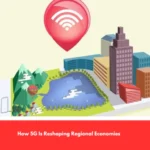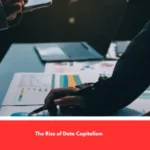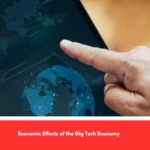How Artificial intelligence (AI) Disruption Affects, but it likely won’t change in all regions in the same way. The debate about AI and work focuses heavily on high-income countries where the technology poised to redefine entire sectors. But what will AI mean for workers in developing countries, who account for 80 percent of the world’s workforce To better understand the impact of AI on employment in developing countries, a recent white paper analyzed data from 25 countries with a population of 3.5 billion.
We assessed the level of AI exposure of workers in these countries measuring the extent to which their jobs could be performed by AI. Our findings suggest that the impact of AI on employment will be slower in the Global South, particularly for low-income countries. Job exposure to AI varies widely. Some occupations such as roofing professionals are only slightly exposed to it, so the likelihood of AI changing their jobs is very low. On the other hand, jobs such as payroll managers face very high exposure, meaning that AI is even more likely to radically change the way we do things.
Who could control the development of AI?

After selecting the jobs most frequently affected by automation, the global distribution of the most common employees across jobs often falls into occupations with medium or low levels of AI exposure, such as auto mechanics. To decide our measure of AI exposure, we begin by analyzing the set of tasks that together make up each job. Next, based on previous research, we assign each job its minimum AI level. We then continue to add up to arrive at each job’s AI exposure value. Finally, we created a map of AI exposure by job change for each individual worker in the Global Labor Force Survey data.
Depending on the reality, these three factors will likely play out differently in different sectors and economies. AI could also give rise to entirely new workplaces that we haven’t yet considered. I was going to see a new study from the National Academies implemented. Drew Johnson, in a National Academies study focused on the United States, noted that this is a very uncertain time to say what the future holds for the type of work. In many developing countries, the disruption will occur at a slower pace, creating a unique moment for governments and businesses to determine AI’s place in the workforce.
Great Power Public-Private Consortium

Countries with proactive policies could leverage AI to empower workers, not replace them. We are on the verge of a digital revolution capable of boosting productivity, stimulating global growth, and raising incomes worldwide, but which could also simultaneously create unemployment and deepen inequality. The rapid advancement of artificial intelligence seems to have captured the world’s attention with great expectations and alarm, and with a host of questions about the impact it will have on the global economy.
With a fair amount of headache, the general impact is difficult to estimate, because the echoes of AI in economies will be profuse. What can be stated with that certainty that is worth saying, is that we will have to launch a set of policies that allow us to take advantage of what AI can be without risking the great potential it holds in our favor for the benefit of humanity. Much research has warned the boomerometer that AI could reverse jobs. But in too many cases, AI will be used to complement the work of human beings. The IMF analysis takes these other two forces into account.
What have we learned?

The findings are striking: Nearly 40% of global employment is under the wing of AI. Automation and information technology have always sought to perform tasks in a generic way but one characteristic that makes AI special is its influence and, in particular, its impact on highly specialized tasks. This creates greater risk for advanced economies compared to emerging and developing countries, but it also offers them more opportunities to launch projects and take advantage of them.
In high-tech economies, about six out of 10 job openings are close to falling victim to AI. Almost half of the jobs at risk could benefit from AI addiction, and AI could also affect income and wealth inequality within countries. We may see a divide within income categories, with workers who can take advantage of AI achieving higher productivity and wages, while those who cannot are left behind. Studies suggest that AI can help new entrants to the sector achieve faster productivity. Younger people will be able to adapt easily to exploit schemes, but those with higher incomes will have to accumulate work.
Conclusion

The effect on labor income will largely depend on the degree to which AI augments the tasks performed in higher-paid jobs. If it unusually complements these workers, especially, AI could translate into an unbalanced increase in their wages. The higher productivity ratios of companies that deploy AI will likely support the performance of capital as well, and if workers are doing quite well, they will benefit. These two factors could exacerbate inequality.
AI is likely to worsen the inequality gap in most cases; an unpleasant trend that policymakers must proactively address, as technology deepens social tensions. It is essential that countries have national safety nets and employment retention programs for vulnerable people. Maintaining unchecked livelihoods and mitigating inequality will allow us to make the transition to AI more equitable. The entire world is seeing how all companies are implementing AI at an impressive pace, and this clarifies the need for policymakers to take action.





